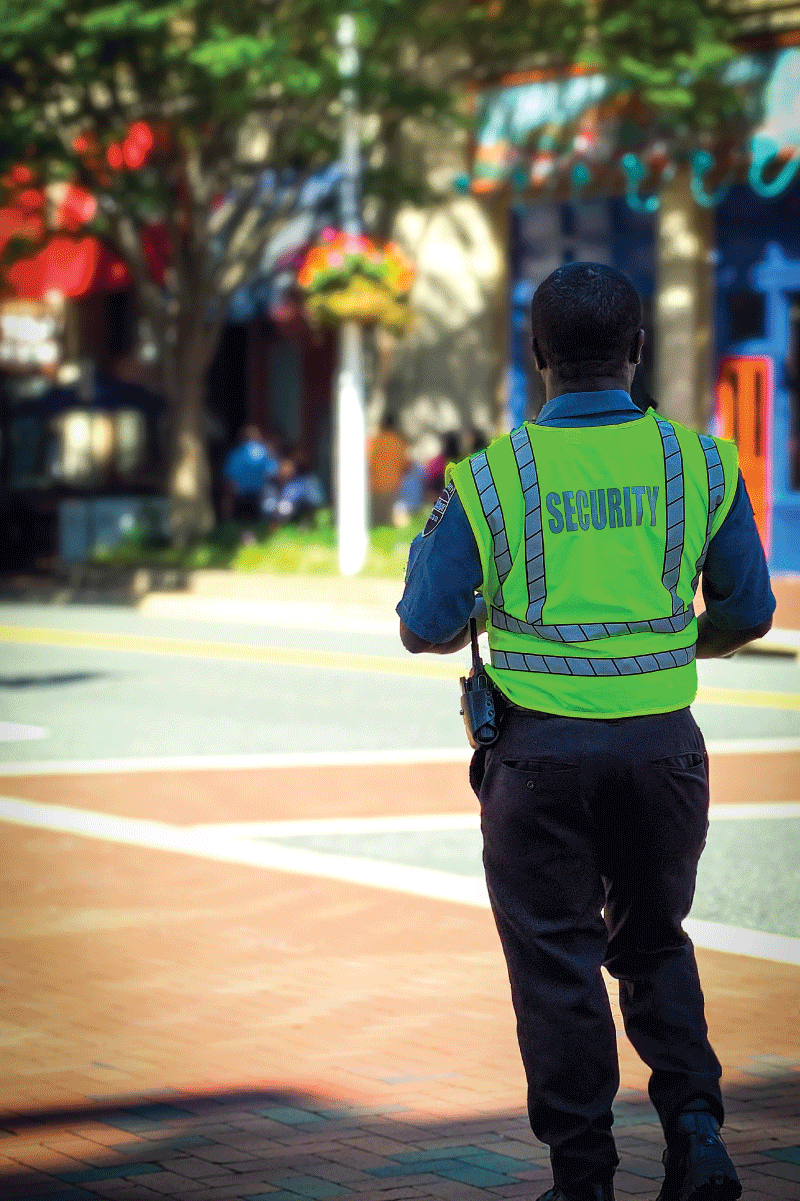It would be wonderful if houses of worship were exempt from threat, but history has shown this isn’t the case. While this may be a tough pill to swallow, multisite church security is – and will continue to be – a modern and crucial component of facility design.
Here are some elements to consider:
Egress
Simon Osamoh is founder of Kingswood Security Consulting in Chaska, Minnesota, and the author of several books, including Securing Church Operations: A Seven Step Plan for Ministry and Safety Leaders, and Church Safety: Responding to Suspicious Behavior. He was head of counter terrorism at Mall of America in Bloomington, Minnesota, and prior to emigrating to the U.S., he spent 14 years working as a detective in England with a focus on organized crime. (In 2006 he was part of the team that collaborated with the British Security Service on the liquid bomb terrorism plot against the U.S.) His firm consults on security matters with for-profit and non-profit organizations including churches, and provides security risk assessments.
When working with architects, Osamoh highlights building egress as a key element in making a building safer. He acknowledges that this can be a challenge with churches, who are focused on community outreach and, therefore, want their facilities to be open to the public.
“You can get into the danger where a building design has 14,15 entrances and the church has no idea who is inside the building, which can be a safety risk,” Osamoh says. “Secondly, they have no way to manage those entrances because they’re not designed to go past an entry point, like a front desk area.”
Instead, Osamoh encourages churches to funnel people through one or two entrances that are well-marked. “You’ll know who’s inside your building, and those guests, staff members, and pre-school families can be greeted by someone,” he describes. This interaction contributes to the church’s mission––outreach––while keeping everyone safer.
Jesus Villahermosa was a deputy sheriff and point man for the S.W.A.T. team in Pierce County, Washington, for 33 years. During his tenure, he was a first responder to a number of mass shootings, including one at his son’s high school. (Thankfully, his son survived.) Throughout his career, Villahermosa has researched mass shootings around the world. As president of Crisis Reality Training Inc., based in University Place, Washington, he teaches K-12 school districts, higher education institutions, and corporations how to protect themselves in the event of a mass shooting. He also provides consulting services and security risk assessments to help architects and organizations to design safer facilities.
Villahermosa underlines the importance of vestibules that control building access. These walled-in spaces close guests off from the rest of the facility while awaiting admittance, and often incorporate a window between the reception area and antechamber. He says that this window should be either shatterproof or laminated with bullet-resistant material; the lower wall beneath the reception window should be bulletproof so that an active shooter can’t fire through it, either. The reason: upon hearing gunfire, administrative staff will likely drop to the floor. If the wall material isn’t bulletproof, they risk being shot while taking shelter.
“Sandy Hook had a vestibule, but it was all [untreated] glass,” Villahermosa illustrates. “The shooter just shot through the glass pane, walked right through and started the massacre because he had complete access. A vestibule restricts the visitor’s access to one point, and at that point is when we decide if we let you go any further.”
Glass
Most would agree that expansive window systems make for a beautiful structure, both inside and out. As mentioned above, the problem with too much glass is that an active shooter can easily fire into it and gain access to a facility––and worse, hit their targets.
“Active shooters are stimulated by sight and sound––if they can’t see you, they’re typically not going to hunt for you,” Villahermosa said. “If they look in a room and they see nothing, they’re gone. And the reason for that is they’re in a hurry because the cops are coming.”
That’s not to say that Villahermosa believes churches should be bunkerized to prevent all visibility into every room. “Aesthetic appeal can be met, architecturally, without giving up the requirements of ambient light simply by finding a common ground for safety,” he says. “That middle ground should be: what meets this criteria but still allows us to offer people more shelter in a shooting?”
Take a church daycare––which requires visibility into it––as an example: much like the vestibule, Villahermosa’s solution is four feet of bulletproof wallboard from the ground up, combined with either shatter-resistant glass, or windows treated with bullet-resistant laminate. This provides children and their caregivers the opportunity to take shelter against the wall during an active shooting.
Another option, Villahermosa notes, is eliminating daycare windows entirely. Instead, the church can install cameras and provide a live video feed to parents so that they can monitor their children’s activities via their mobile devices.
Villahermosa also counsels shatter-resistant glass or bullet-resistant laminate for exterior windows––but not all of them. While treated windows provide protection from outside threats, there may be a need for occupants to break the glass and escape. Conversely, law enforcement positioned outside may need a shot into the space when they locate the shooter. To strike this balance, Villahermosa suggests treating either the largest exterior window in a space––or several smaller ones, depending on the design––and labeling them with something as simple as a sticker. Importantly, facilities should let the police know of any bullet-resistant windows on the premises, well ahead of any incident. This way, the authorities can record this in the organization’s premise history and arrive on scene informed.
Wayfinding and Compartmentalization
Clear wayfinding (including signage) also provides for a good guest experience, and once again reduces the number of people wandering around areas where they don’t belong.
Because many churches rent out their facilities for third-party use, designs should take into account which areas these groups have access to, and which should remain isolated from the public.
Grants
Osamoh notes that some churches may be eligible for grant money that is earmarked for non-profits seeking to boost their security. He points churches toward FEMA’s Nonprofit Security Grant Program for 501(c3) organizations.
Creating More Secure Church Campuses
Lorem Ipsum dolor sit amet quid dolormentum. Proin gravida nibh vel velit auctor aliquet. Aenean sollicitudin, lorem quis bibendum auctorelit consequat ipsum, nec sagittis sem nibh id elit. Duis sed odio sit amet nibh vulputate cursus a sit amet mauris. Morbi accumsan ipsum velit. Nam nec tellus a odio tincidunt auctor a ornare odio. Sed non mauris vitae erat consequat auctor eu in elit. Class aptent taciti sociosqu ad litora torquent per conubia nostra per inceptos himenaeos. Mauris in erat




